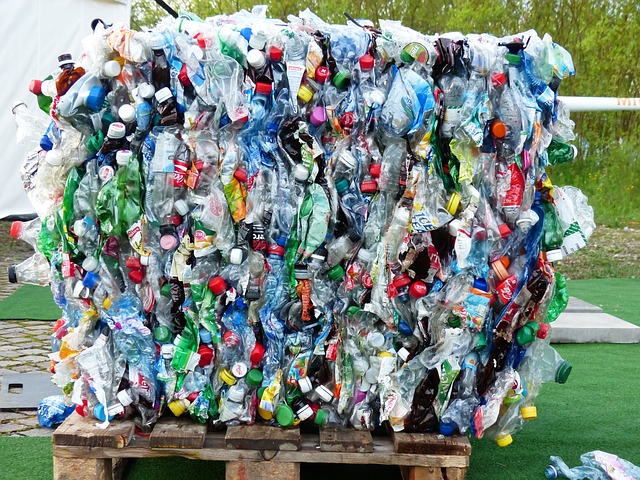For decades, the U.S. has been exporting its plastic for recycling. It’s easier and cheaper to send it to countries where labor costs are low than to develop an infrastructure that can process the quantity of plastic waste we generate. But is it really due to costs and infrastructure? Or has it become a matter of global NIMBYism that we ship our plastic waste to poorer countries to deal with it?
NIMBY is an acronym for the phrase, “not in my backyard.” It describes a situation when residents challenge proposed infrastructure developments that they perceive as unpleasant or dangerous in the immediate area where they live — usually without raising objections for similar projects elsewhere. You may have heard of NIMBY in relation to affordable housing, railroads, or landfills when it often signals a problem with environmental racism. But recycling plastic?
Plastic overuse has consequences that extend far beyond our national borders. When the U.S. and other wealthy nations export plastics to less industrialized countries that aren’t able to effectively process it for recycling, it causes major harm to the environment, economy, and health of their residents.

How Did We Get Here?
The fact that people want to recycle is good — but virgin plastic production is still increasing, due in part to multinational companies like Nestlé, Unilever, Coca-Cola, and PepsiCo that profit internationally from single-use models.
Globally, we produce around 335 million metric tons of plastic a year … and landfill 90% of it. The remaining 10% still translates to significant tonnage for potential recycling. Alongside other nations, the U.S. exports a large percentage to Southeast Asia, resulting in a whopping transportation footprint that may offset some benefits of recycling.
We export our plastics because local solutions can’t manage the scale of our recycling. In the U.S., intake at materials recycling facilities (MRFs) regularly exceeds capacity, leading some to shut down. Alternative “waste-to-energy” models are still not effective enough to be adopted on a wide scale — not to mention that few people want these plants in their backyard, since burning plastic releases carbon dioxide and other toxins.
MRFs used to sell extra recyclables to China, but high contamination rates led China to impose a near-total ban on recycling imports in 2018. In a high-profile incident, Philippine President Rodrigo Duterte threatened to ship containers, which were falsely labeled as containing plastics meant for recycling but instead filled with household waste, back to Canada — and ultimately did. Illegal imports continue to plague the country.
While plastic is a global problem (the Philippines has since begun considering a nationwide ban on single-use plastic), the situation highlights growing tensions between developed and developing nations that leaves the latter feeling like a “dump site,” as Duterte put it.
What Does It Look Like?
After China’s ban, regions including the U.S., U.K., EU, Australia, New Zealand, Japan, and South Korea diverted our anticipated “plastic mountains” to Southeast Asian nations like Malaysia, Vietnam, Thailand, and Indonesia. While they sought to fill the void left by China, they do not have the infrastructure or monitoring systems to manage the influx.
Research has found that too often, plastics set for recycling end up in the ocean. Thailand, known for its beaches, has had to periodically close its islands for cleanup. Unfortunately, this only delays the problem, since waste collection may still end up in landfills and/or waterways.
But the sinister impact of recycling exports goes beyond harm to the environment and tourism industry where so many make a living. For example, a Greenpeace investigation found that “From January to July 2018, Malaysia imported nearly a million tonnes of plastic wastes. The fresh influx […] led to the overnight increase of illegal [factories], dump sites and open-air burning.”
Yes: Plastics sent for recycling are often landfilled, incinerated, or simply burned in the open, polluting the air, land, and waterways of vulnerable communities nearby. Even authorized recycling facilities may not give workers PPE.
Faced with climate change, harm to local agriculture and aquaculture, and widespread health problems, including chronic respiratory infections, Malaysia banned plastic imports in 2019, one year after China. Governments, companies, NGOs, and residents all play a role in moving change forward. The Philippines has considered following Malaysia’s example, but loopholes abound. Locals have delivered an “invoice from the Filipino people” to Nestlé Philippines to account for the costs of its single-use packaging.
As of January 2020, the EU has banned “plastic waste exports to poor nations” and the United Nations has implemented new waste export regulations that extend the Basel Convention that controls the transportation and disposal of contaminated waste. These decisions will set up a stricter, permissions-based agreement between the countries that send and receive recyclables.
What Can You Do?
Just as Rome was not built in a day, neither was our plastic pandemic. Nor was it built by one person.
While no one wants pollution in their backyards, we shouldn’t ignore how our waste impacts our international neighbors. We also need a large collective effort to change our habits from the get-go and create a more circular economy. Take the time to recycle every plastic item you use, and share the lessons with your community.
The #BreakFreeFromPlastic Movement names five Just Recovery principles that provide a great foundation for communities, companies, and governments to begin to act:
- Prioritize health for people and planet;
- Invest in solutions, not bailouts;
- Replace single-use with sustainable systems;
- Demand corporate and government accountability, and;
- Engage impacted communities.
As an individual, adopt a “my waste, my responsibility” outlook. Advocate for clear plastic reduction plans in your community. Buy in bulk with reusable containers, choose renewable packaging options instead of plastic, and reduce unnecessary consumption.
The post Our Plastic Crisis Has Made NIMBYism Global appeared first on Earth 911.








